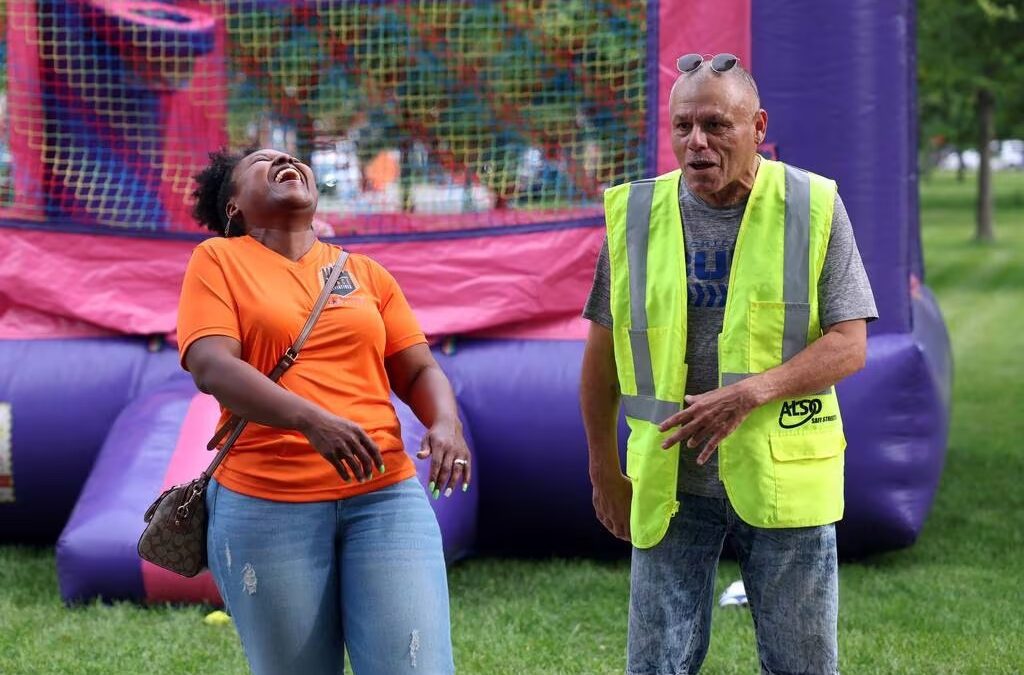A few weeks ago, a local foundation announced a major grant to help expand community violence intervention (CVI) programs. A few months before that, a major business group publicly committed to helping raise millions to support CVI.
In the last four years, city, county and state governments have invested hundreds of millions of dollars to grow and expand CVI programs, and the White House has established an Office of Gun Violence Prevention. In the last eight years, local foundations have invested hundreds of millions of dollars to build a network of CVI groups that today serve nearly half of Chicago’s 77 neighborhoods.
Collectively, the public, private and nonprofit sectors have all embraced a strategy to complement traditional policing with CVI, and our law enforcement leadership welcomes the help. In the realm of public policy, this kind of alignment across all sectors, at every level of government, and among all key stakeholders, is rare, if not unprecedented.
As 2023 winds down, Chicago can celebrate two years in a row of declines in gun violence. We can also highlight a growing body of research by the University of Chicago Crime Lab and Northwestern University’s Center for Neighborhood Engaged Research & Science (Corners) affirming that CVI is not just a correlating factor in the decline of gun violence but is very likely a causal factor. In the world of social science, that qualifies as a very big deal.
[ Andrew Papachristos: Targeted violence prevention is working in Chicago. Workers need to reach more people. ]
Meanwhile, a pilot program that began in 2022 to take CVI to scale in one community of Chicago, North Lawndale, is promising enough that we are now embarking on a 10-year effort to take to scale similar neighborhood collaborations in other Chicago communities. Other cities, including New York and Los Angeles, have dramatically reduced gun violence through CVI and other strategies. To be on par with them, our goal is an 80% reduction in shootings.
While taking CVI to scale will be costly, we estimate that every dollar invested in CVI can generate up to $20 in return through lower criminal justice costs, greater economic opportunity and increased tax revenues.
More important than the financial return on investment, however, is the cost in lives saved, trauma avoided and communities healed. For Chicago to have a bright and strong future, the violence must stop. We are committed to unity and collective sacrifice for the greater good of our communities and our city.
Chicago’s success in taking CVI to scale depends on a few critical factors:
First, communities must support the work. CVI only succeeds when hyper-local organizations native to the community hire individuals with “license to operate” (street cred) to engage directly with young people at risk of shooting or being shot and get them to put down their guns.
The culture of gun violence runs deep in Chicago. Multiple generations of young people have grown up believing they need to arm themselves to stay safe and have no options besides the illegal economy. Convincing them otherwise requires relentless engagement from outreach workers, life coaches helping participants stay on track, mental health practitioners helping them heal from trauma and job coaches preparing them for work.
Since 2016, Chicago has built a professional workforce of more than a thousand men and women playing all of these vitally important roles. It includes many formerly incarcerated men and women, essentially amounting to one of the largest reentry programs in the country. We have also created the Metropolitan Peace Academy on the Lower West Side of Chicago to train and support them.
Second, we must be absolutely transparent about what’s working and where we fall short. We show our work by partnering with leading social science researchers to independently evaluate us, and by regularly convening in the community to share stories and garner input.
Third, in addition to helping expand CVI, the business community has also committed to providing jobs for CVI graduates, and to hire from and invest in communities suffering from gun violence. For CVI to work, there must be a job at the end of the line, and for communities to thrive and recover from decades of violence, there must be investment.
Fourth, police must be more effective. Low arrest rates for shootings and homicides drive retaliatory violence. Police must boost clearance rates, so victims have more confidence in our justice system, and accelerate reforms to rebuild trust.
Finally, elected leaders at every level of government must find the resources to keep CVI on track as federal COVID-19-relief funds dry up. This may require new revenue sources.
As the year ends, we are grateful for everyone who has brought us to this point. We ask everyone to continue to believe it is possible to change, get better, be safe and bring down gun violence. Thanks to so many people across our city and state, we’re working hard to achieve this every day.
Vaughn Bryant is the Executive Director of Metropolitan Peace Initiatives. Arne Duncan is the founder of Chicago CRED.
